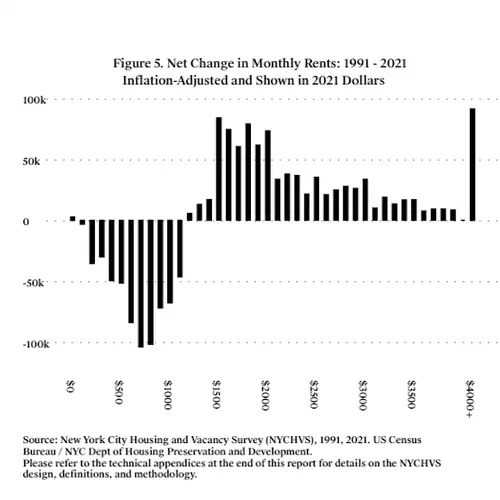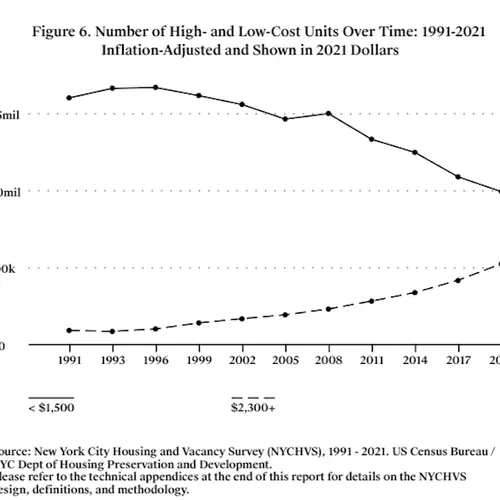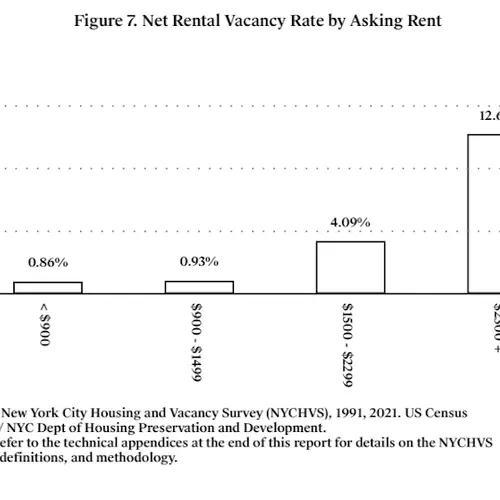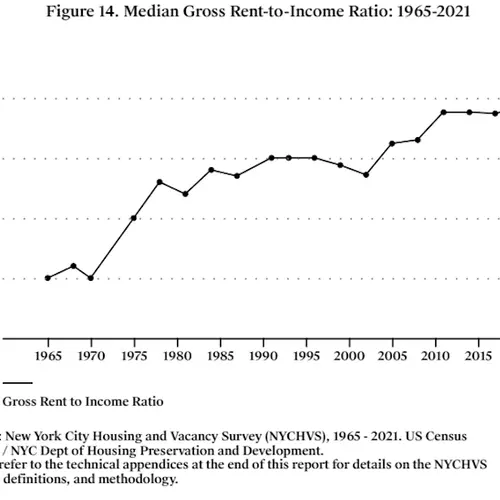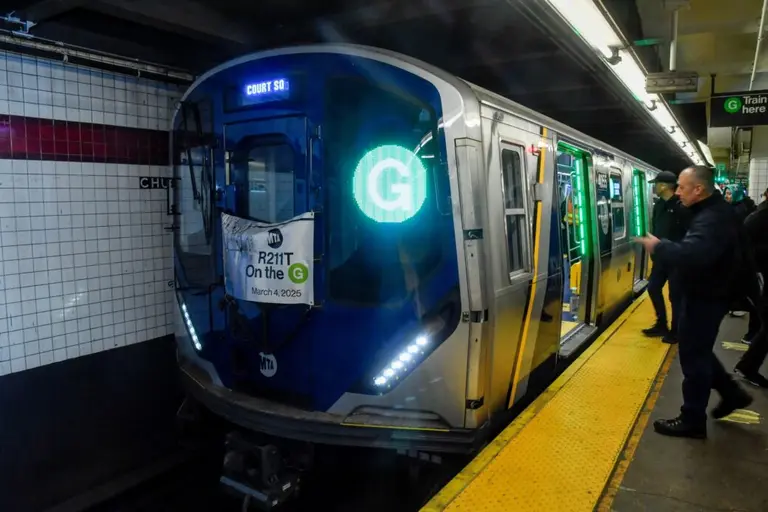New survey highlights NYC’s rental housing crisis, showing few affordable apartments available

Photo by Dimitry Anikin on Unsplash
The city’s Department of Housing Preservation and Development (HPD) released a report this week revealing the first findings from the 2021 New York City Housing and Vacancy Survey (NYCHVS). The report illuminates a trove of information on the city’s housing realities since the pandemic began. The survey shows that the city’s overall median household income would have to double in order to cover the median asking rent of $2,750/month. It also reveals an extreme shortage of vacant units among the city’s low-cost housing: The vacancy rate for homes listed below $1,500/month was less than 1 percent, the lowest in 30 years. And New York City saw a substantial net loss of low-cost units–and a net increase of higher-cost units–since 1991.
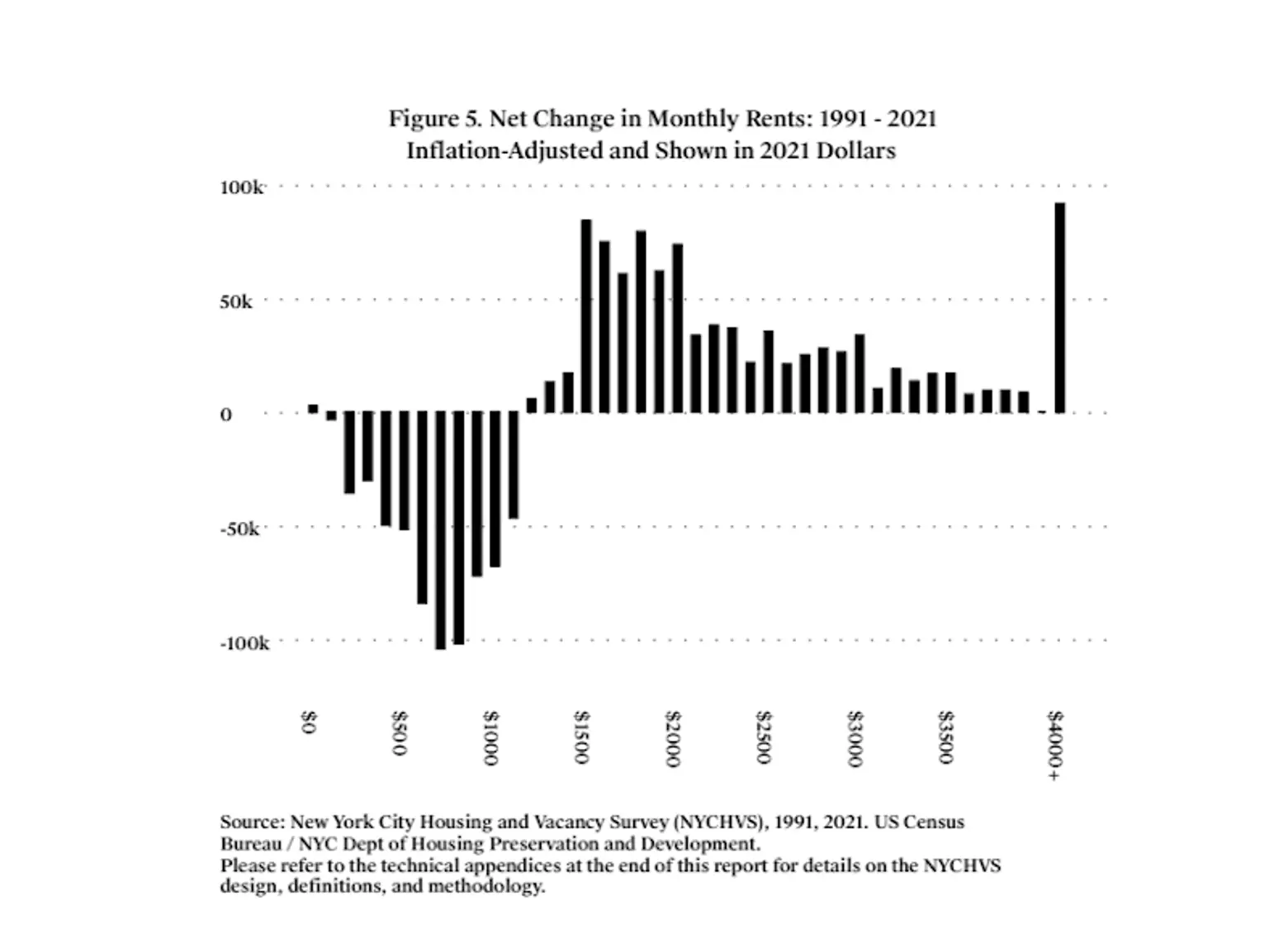
Every three years since 1965, HPD and the U.S. Census Bureau conducts a survey of the city’s housing stock. The 2021 survey attempts to show how the pandemic affected New Yorkers’ financial stability, rent-burden levels, health, and well-being. It also looks at how the city has changed over the last half-century.
The NYCHVS covers public housing, co-ops and condos, market-rate rental buildings, and single-family homes as well as looking at the city’s unique inventory of rent-stabilized units, rent-controlled units, and Mitchell-Lama buildings. This important picture of the city’s housing stock, neighborhoods, population, and vacancy rate helps inform policy and the much-needed initiatives for creating a more equitable, livable city.
“The New York City Housing and Vacancy Survey is a critical tool for our understanding of the city’s housing market. New Yorkers can be confident that, despite all of the challenges, this year’s survey was conducted professionally and methodically–thanks in part to Intro 70, which I signed in March,” Mayor Eric Adams said. “The findings are clear: Our city’s affordable housing crisis is as dire as ever, and that’s why I am working every day to create and preserve the high-quality, affordable housing hard-working New Yorkers need and deserve.”
Some key data points from the survey:
- A citywide net rental vacancy rate of 4.54 percent.
- The city’s overall median household income would need to double to afford the overall median asking rent of $2,750.
- There is an extreme vacancy shortage among the city’s lowest-cost units: the vacancy rate for homes listed below $1,500 was less than 1 percent – the lowest in 30 years.
- Since 2011, the level of rent-burdened households has remained at the same high level: half of the city’s renter households spent more than 30 percent of their income on rent. One-third of the city’s renters spent over half of their income on rent, indicating a severe rent burden.
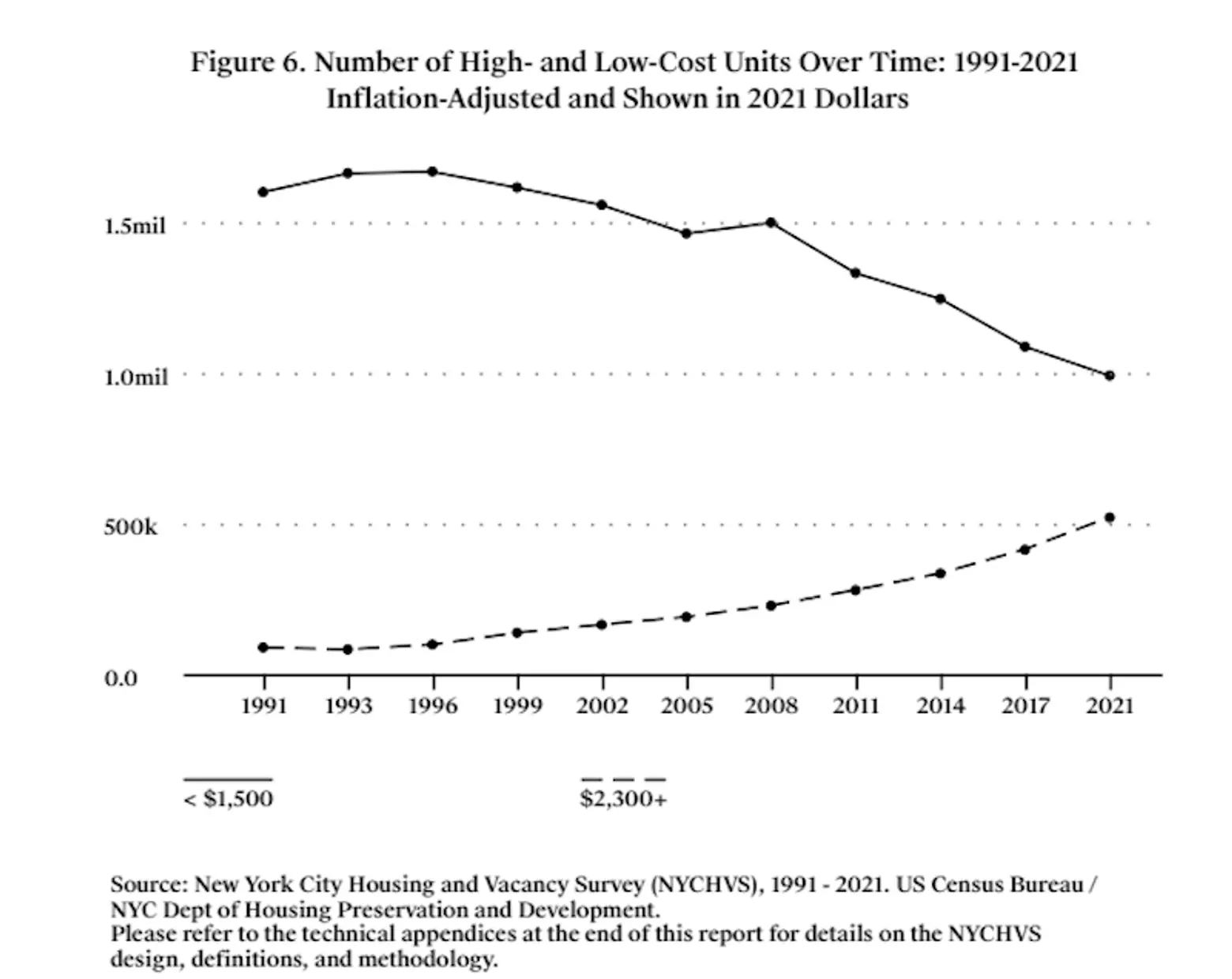
Between 1991 to 2021 (adjusted for inflation) New York City saw a substantial net loss of low-cost units–and a net increase in higher-cost units. Over that time period, there was a net loss of about 96,000 units with rents below $1,500 and a net increase of 107,000 units with rents higher than $2,300 or more.
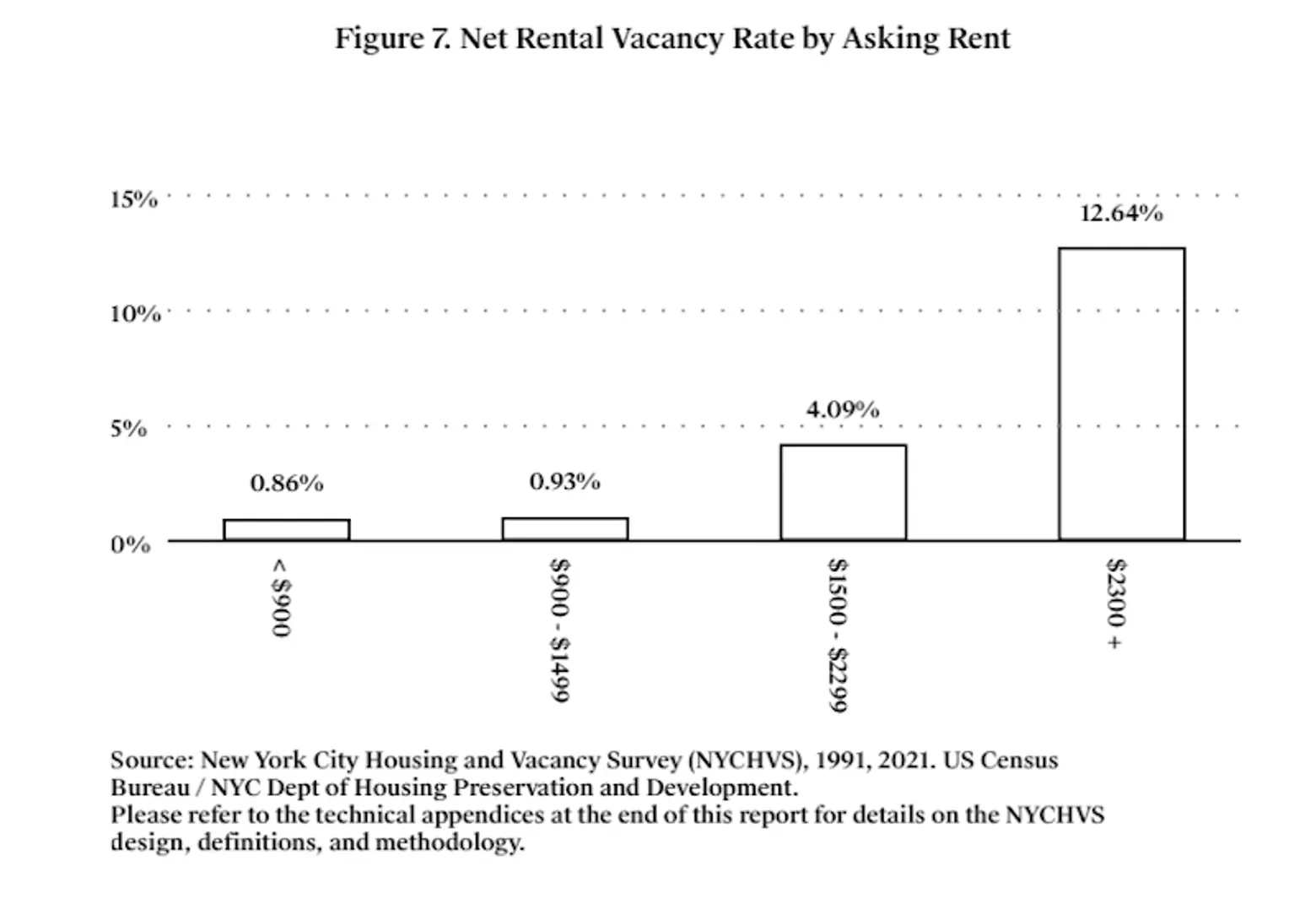
The vacancy rate among the city’s rental housing stock varied greatly by rent. For units with rents of less than $900, the net rental vacancy rate was 0.86 percent, and those with rents of $900 to $1,499 had a vacancy rate of 0.93 percent. However, for units with rents of $1,500 to $2,299 the net rental vacancy rate was 4.09 percent; among units with rents of $2,300 and above, it was 12.64 percent.
What this means: The number of units available for less than $1,500 (the median rent for New York City in 2021) was extremely low.
More illuminating data on vacancy: 96,830 units (27 percent) were not available for rent for two or more reasons. 244,400 were unavailable for only one reason. The most prevalent reason given was that the unit was used for seasonal, recreational, or occasional use (102,900 units or 29 percent of all units not available for rent or sale). This number was 74,950 in 2017.
One reason units may not be available for rent or sale is that they are in use as short-term rentals. Curbed recently reported findings by AirDNA, a third-party tracker of short-term rentals, that show that the number of listings available on Airbnb is actually higher than the number of apartments available for rent by several thousand.

Rent burden has long been an issue for an overwhelming number of New York City residents. The NYCHVS shows that in 2021, over half of renter households were rent-burdened, meaning that more than 30 percent of their income was spent on rent; 32 percent were severely burdened, meaning over half their income went toward rent.
Looking at financial hardship, the survey reveals that just under 290,000 renter households (13 percent) reported missing one or more rent payments in the last year. Of these, about 84,000 (29 percent) reported still owing back rent at the time of the survey, with the lowest income group experiencing the highest rate of rental arrears (38 percent). The survey shows that the city’s renters struggled financially: 13 percent of renter households say they missed a rent payment in the last year.
New York Housing Conference, a nonprofit affordable housing policy and advocacy organization, released a NYC Housing Tracker as a tool to help analyze data that addresses the city’s affordable housing crisis. The NYC Housing Tracker shows affordable housing production in each City Council district between 2014 and 2021, as well as a profile of district demographics and housing needs.
HPD plans to release more data in the near future; findings will be reviewed by the New York City Council in order to determine whether New York City is still in a state of housing emergency, and whether there is still a need for the city’s rent stabilization laws. You can read the report on the initial findings of the survey and find out more about the NYCHVS survey here.
RELATED:
- New York lawmaker proposes converting empty offices and hotels into affordable housing
- Mayor’s budget comes up short on housing and homelessness, NYC advocates say
- Former illegal Upper West Side hotel will become apartments for homeless and low income residents
- New York City’s housing experts have a wish list for Mayor Adams
